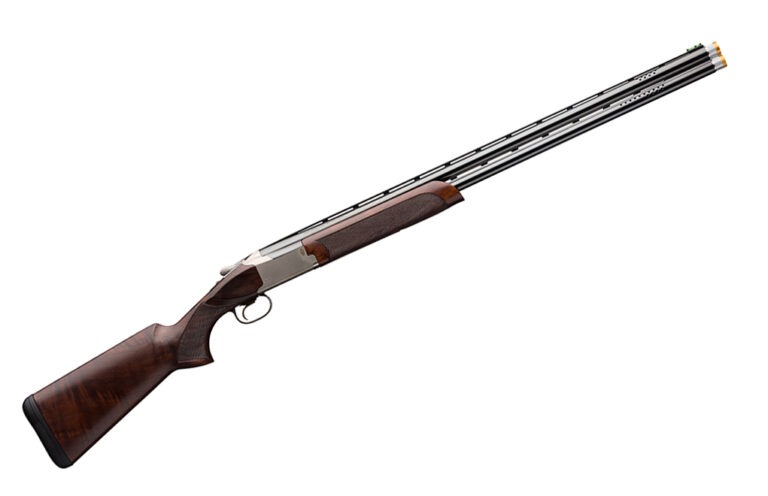
Looking for a scattergun on the smaller side? Here we discuss .410 bore’s usefulness and look at the best .410 shotguns on the market.
The humble .410 shotgun is maligned as being too puny for the purposes other, larger gauges excel at, but it’s closer to the truth to say that it’s been misused and misunderstood. Approached properly, it fills some roles and does so very well.
So, let’s talk about the best uses of .410 shotguns and look at the top models currently on the market.
Is A .410 Shotgun Worth Owning?
The .410 shotgun has a place, but where people go wrong is when they use a little shotgun for big shotgun things. Where the .410 shines is taking small game or pests at modest distances or as a youth/smaller shooter’s hunting shotgun.
Pest control is exactly what it was invented for.
The .410 bore was developed in the 1850s by the Eley Brothers company in the U.K., and yes that company is the same Eley that produces match-grade rimfire ammo today.
The original load was a 2-inch shell with a light birdshot load, with the original gun being a lightweight single-shot break action “garden gun” intended for dealing with garden pests and maybe a bit of small game hunting at close range.
What the .410 Shotgun Does Well
The .410’s recoil is mild (often 10 foot-pounds or less) and the slimmer, lighter nature of the shotguns makes them much handier than a 12-gauge. It’s an easier gun to run, especially for smaller people, but the issue has always been that it typically patterns erratically after 20 to 25 yards with poor shot density.
Approached thusly, it has a role, though a more limited one compared to other bore diameters. As stated, the .410 works well as a pest-control option and with the improvement in loads has seen a resurgence among turkey hunters.
The .410/.45 Colt revolvers are a good choice for pests like snakes, rats, squirrels, raccoons, coyotes and so on, but frankly leave much to be desired as a fighting revolver. The ability to fire shot shells is often marketed as some sort of tactical advantage, but frankly, it isn’t. For defense against humans, a good .45 Colt bullet will always be a better choice than even a defensive .410 load.
So, .410 does well within its niche. The question is if that niche applies to you.
.410 Ammunition And Ballistics
The typical light target load of .410 is a 2 ½-inch shell with a ½-ounce payload (typically 175 pellets) of #7-½ shot at somewhere around 1,300 fps.
By contrast, the target load of the other classic youth/women’s shotgun—the 20-gauge—puts a ⅞-ounce load of #7-½ shot in a 2 ¾-inch shell at roughly the same velocity, which is typically 306 pellets.
The 3-inch .410 shells can go up to 11/16 ounces of #7-½ birdshot (241 pellets is standard) which is more useful as sue to a greater pattern density. the .410 has classically suffered from inconsistent patterns and low pattern density beyond about 20 yards, and this is also why many .410 shotguns come with a full choke barrel to maximize effective range.
Few commercial loads exist in shot sizes between #6 birdshot and 000 buckshot, though some #4 and BB loads are out there. There just isn’t enough space in the shell for very many pellets.
A typical .410 buckshot load is three to four pellets of 000 at 1,300 fps out of a full-length (usually an 18- to 20-inch) barrel. The classic 2 ¾-inch 12-gauge load is 9 pellets of 00 buck at 1,325 fps.
That said, .410 slugs redeem it little.
A typical .410 slug is a ¼-ounce (~110-grain) projectile in a 3-inch shell, loaded to around 1,750 fps and 780 foot-pounds of energy. And that’s when using a gun with a long barrel. Once you get to the revolvers, it becomes even less impressive.
.410 revolver barrel lengths vary, but from a 3-inch barrel, birdshot tends to exit with a muzzle velocity of 750 to 900 fps depending on the load. .45 Colt tends to leave the muzzle at somewhere between 700 fps and 900 fps, again load-dependent.
As for personal defense,.410 is viable but not optimal. It’s something that can serve in that role if it’s the only gun you have, but it’s not something you should go out and buy for that specific purpose.
Defense loads for .410—optimized for both short and long barrels—are available, such as those by Hornady and Winchester. Hornady puts a .41-caliber FTX bullet over two 000 pellets, and Winchester stacks 3 plated “defense disks” over 12 plated BBs. Those, and of course good quality .45 Colt loads, are certainly capable of stopping a threat.
In short, .410 is deficient compared to larger shotgun gauges if you’re trying to press it into a role that it was never designed for. It’s a snake-stopper, not a man-stopper or even a deer-stopper (the latter has been done with good shot placement, but it’s not recommended). Pest control and certain types of small game hunting are about the only areas where a .410 shotgun may be the best choice. If you’re in the market for one for any reason besides those two roles, it’s time to consider something else.
What Kinds Of .410 Shotguns Are Out There?
Break-Actions
The break-action single-shot is what .410 was originally made for, and they are still common, very affordable and perfect for shorter-range small game hunting and pest control. Over/under and side-by-side .410s are plentiful as well and available at every imaginable price point.
Something like this is probably what makes the most sense for someone in the market for a .410 shotgun. They’re not fancy or tactical, but for “garden gun” purposes it’s all you need.
Pump-Action
.410 pump-actions are also relatively common and are made by several companies that make pump-action shotguns in the more common gauge sizes.
For most “garden gun” utility purposes, a pump-action is overkill, but it could make sense for pest control if there’s more than one critter in need of dispatching. One could also make a great dedicated hunting gun for a youth or for going after certain types of small game or turkey hunters concerned about fast follow-up shots.
Lever-Action
At least a few different companies have made .410 lever-action shotguns over the years as well, and new production options are still available on the market today.
A lever-action .410 generally has the same advantages as a pump, namely a larger magazine capacity and a faster potential fire rate, but with a little more cowboy flair. These could also be used for pest control or hunting, but quality ammo options are more limited since these generally only accept 2 ½-inch shells.
Semi-Autos
Semi-auto shotguns chambered in .410 also exist, but there are fewer options. Some reputable American manufacturers have offered a .410 chambering for their semi-auto guns, but most of what’s on the market today are cheap imports. Of those, some are more traditional, but most are tactically styled magazine-fed models. Those are typically either bullpup designs or patterned after AR-15s. One higher quality semi-auto .410 shotgun is the AK-based Saiga, but those are no longer imported and would need to be bought on the second-hand market.
A reliable semi-auto could also be used for pest control or small game hunting of course, but the higher potential fire rate will usually not prove useful enough to justify the higher cost. Speaking of cost, despite its size, .410 ammo isn’t cheap. The current market has the cheapest loads sitting around 50 cents per shot, so it’s not a great choice for mag-dumping into trash either.
Combination Guns
It’s also worth mentioning that some combination survival guns, such as the USAF-adopted M6 Aircrew Survival Weapon, have been made as well. These usually feature one single-shot barrel for .410 and another for something like .22LR or .22 Hornet.
This probably isn’t the most useful concept for most people, but if you’re some sort of bush pilot or even a serious backpacker, it may make sense. A few different models are still in production.
Handguns
And, of course, there are .410/.45 Colt revolvers such as the Taurus Judge line and the S&W Governor as well as some .410/.45 Colt derringers.
If you want a derringer for defense, there are better chambering options to get one in, and the same goes for revolvers. However, it’s hard to argue with the conveniently small size of a handgun. If you live somewhere with a lot of rattlesnakes, for instance, one of these would make a great choice for toting around your property.
How We Made Our Choices
When it comes to .410 shotguns, the easiest way to separate the wheat from the chaff is by simply looking at the manufacturer. While Turkey does produce some fine shotguns today, most imported .410 options appear to be lower quality than what’s available from companies like Mossberg or Browning. Further, many of the options on the market are tacticool semi-auto guns that we believe serve no useful purpose. When it comes to practical applications, our time spent behind shotguns of different gauges, makes and models led us to these five picks. There are other great options out there, but for simple pest control or hunting, you can’t go wrong with one of these.
The 5 Best .410 Shotguns
Best Single-Shot: Stevens 301
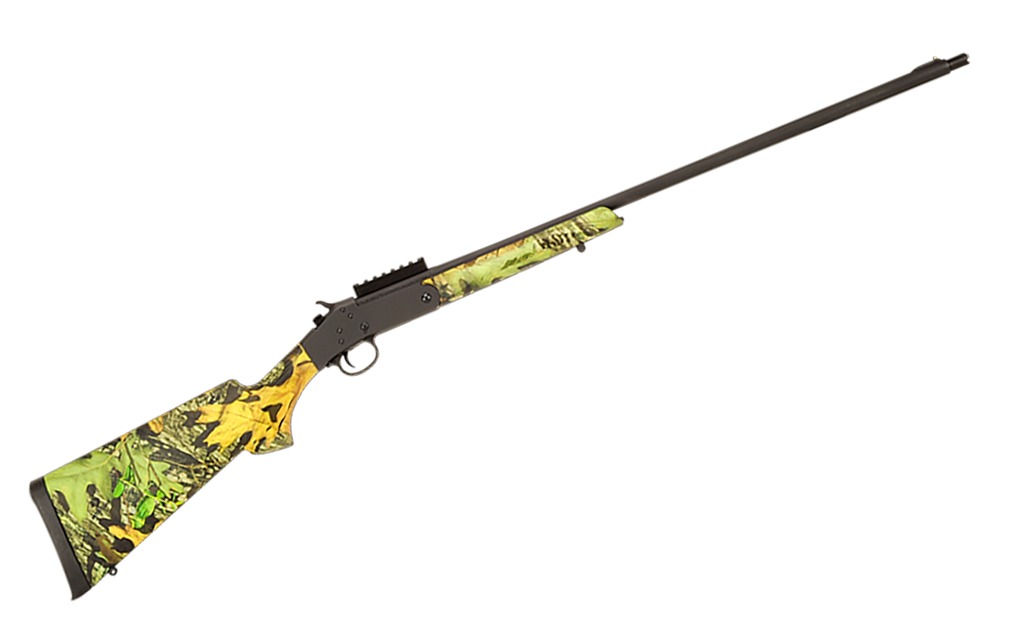

Specs (Standard model)
Type/Action: Break-action
Chamber: 3-inch
Capacity: 1
Barrel Length: 26 inches
Weight: 4.6 Pounds
MSRP: $219
Website: savagearms.com
Pros
- Simple and practical
- Optics-ready models available
- Inexpensive
Cons
- A bit too long for pest control
The Stevens 301 is an inexpensive single-shot with a 3-inch chamber and a 26-inch barrel that’s threaded for Winchester chokes. They make a basic model as well as several Turkey models (pictured) that have a camo synthetic stock and a Picatinny rail for mounting optics for a bit more money.
Ruthlessly simple, very inexpensive and perfect for doing basic .410 tasks like pest control around the house.
Best For Youths: Mossberg 510 Mini Super Bantam
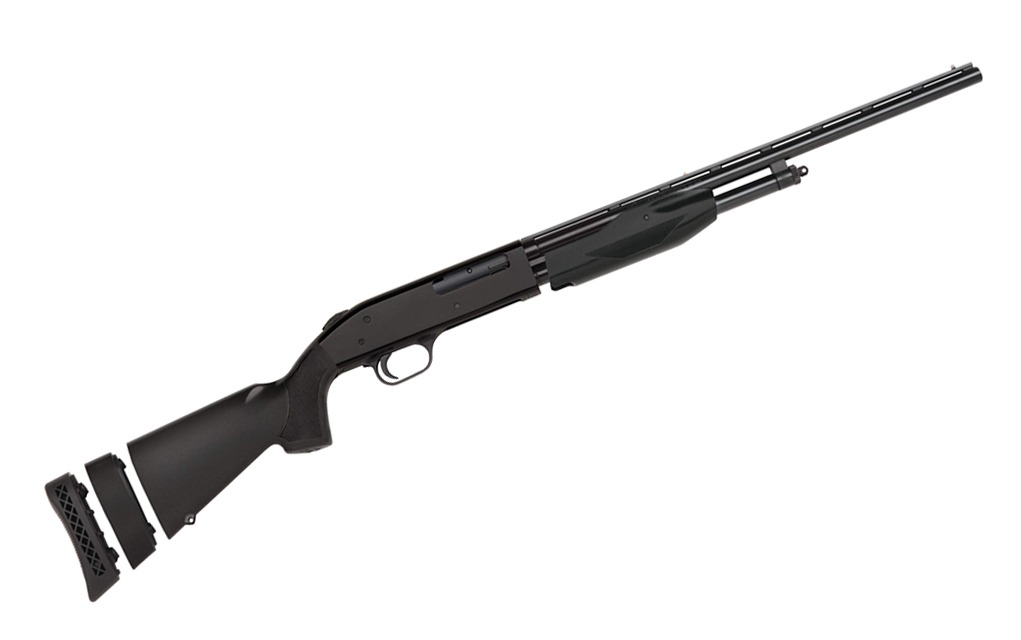

Specs (Standard model)
Type/Action: Pump-action
Chamber: 3-inch
Capacity: 2+1
Barrel Length: 18.5 inches
Weight: 5 Pounds
MSRP: $518
Website: mossberg.com
Pros
- Adjustable length of pull is great for growing youths
- Capacity
Cons
- Expensive as .410 youth guns go
Mossberg’s Bantam series of youth shotguns downsize the gun just enough for younger/smaller shooters to get started on this workhorse pump-action. The 500 Bantam in .410 comes with an 18.5-inch vent rib barrel with a fixed modified choke, dual-bead sights, a 2+1 capacity and an adjustable length of pull. It’s offered in black with synthetic furniture or with a camo finish for some extra cash.
Best Revolver: Taurus Judge Magnum
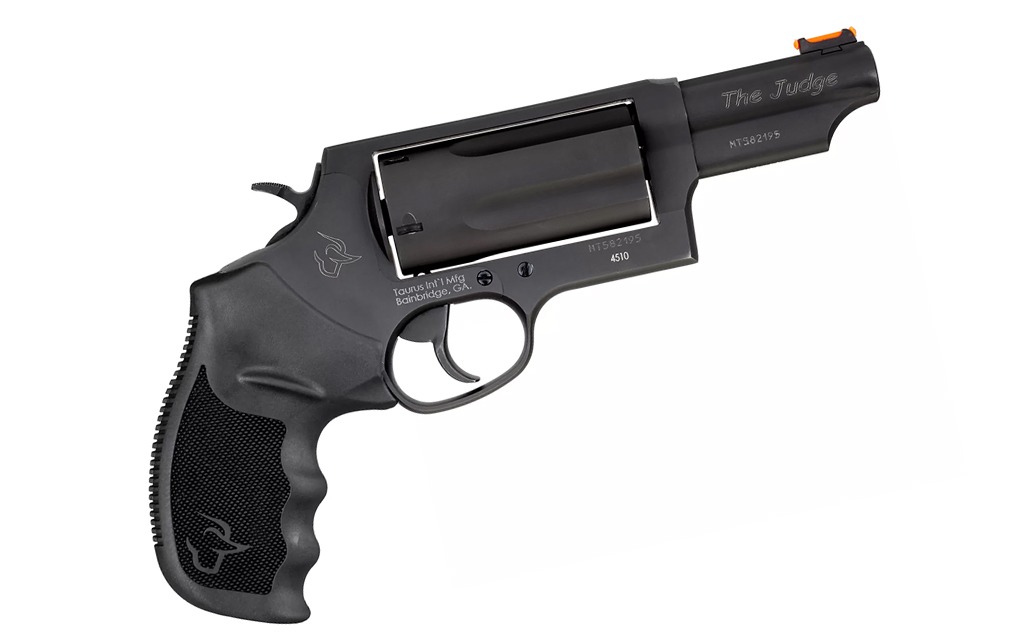

Specs
Type/Action: DA/SA Revolver
Chamber: 3-inch
Capacity: 5
Barrel Length: 3 Inches
Weight: 2.3 Pounds
MSRP: $563.99
Website: taurususa.com
Pros
- Can chamber .45 Long Colt as well
- Very handy and compact, can be carried in a holster
- Optics-ready models available
Cons
- Short barrel means worse ballistic performance
The Taurus Judge Magnum models have a 3-inch cylinder with a 5-shot capacity and a 3-inch barrel, opening up your ammunition choices and making this beast of a handgun a tad more versatile. All models have a fiber optic front sight, making them much more usable. You have your choice of black oxide or a stainless steel finish and T.O.R.O. models are now available if you want to mount a red dot.
Best Semi-Automatic: Mossberg SA-410
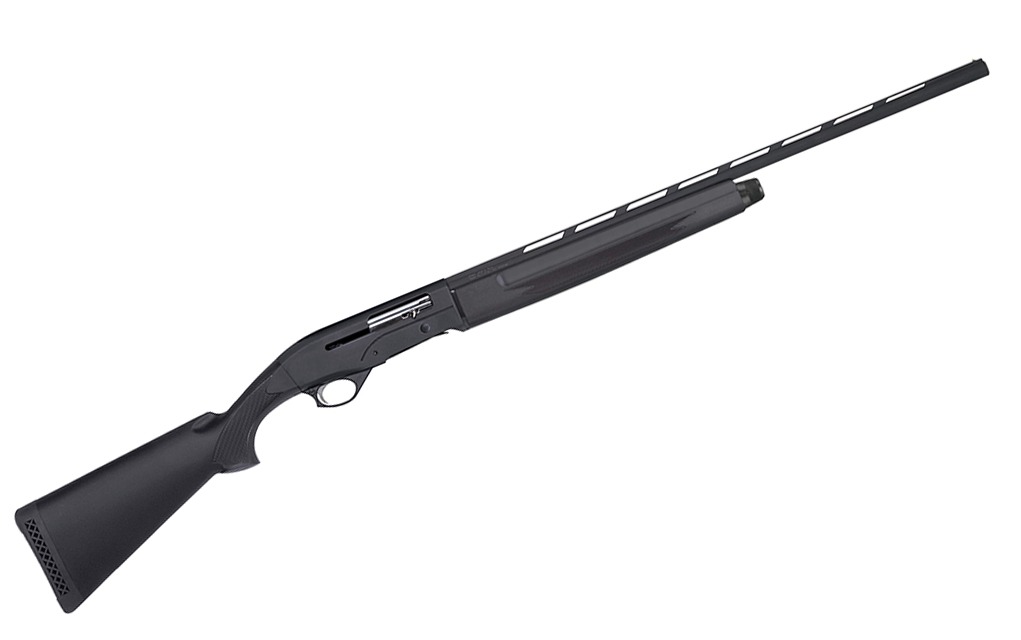

Specs (Field model)
Type/Action: Semi-auto
Chamber: 3-inch
Capacity: 4+1
Barrel Length: 26 Inches
Weight: 6.5 Pounds
MSRP: $757
Website: mossberg.com
Cons
- Expensive
- On the heavy side
For the Mossberg SA-410, probably the nicest semi-auto .410 currently in production, you have a choice between the black synthetic Field model or the camo-dipped Turkey model. Both come with 26-inch vent rib barrels with 3-inch chambers and threading for chokes. The Turkey model adds a rib-mounted fiber optic sight set and a Picatinny rail for adding an optic. Capacity is 4+1.
Best Over/Under: Browning Citori 725 Sporting
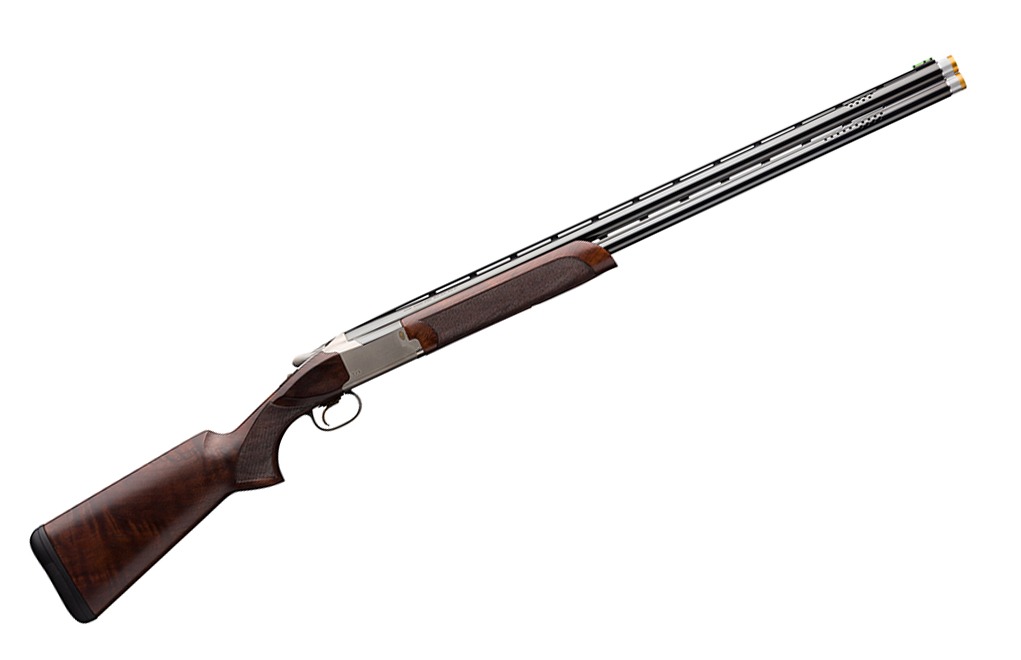

Specs (30-inch model)
Type/Action: Over/Under
Chamber: 3-inch
Capacity: 2
Barrel Length: 30 Inches
Weight: 7.3 Pounds
MSRP: $3,599.99
Website: browning.com
Pros
- Beautiful, excellently crafted shotgun
- Perfect for the discerning sport shooter or bird hunter
The Browning Citori is one of the standards by which all O/Us are judged. Offered with 3-inch chambers with either 30- or 32-inch barrels, the Citori 725 Sporting has ported barrels to tame recoil, choke threads (S, IC, M, IM, F included), a fiber optic front sight, Browning’s time-tested Citori action and Browning’s tuned FireLite trigger.
It’s optimized for skeet and trap, but equally at home in the field. You’d be hard-pressed to find a more capable O/U with the same versatility and build quality. The MSRP is very high, but you get what you pay for.
| MODEL | TYPE/ACTION | CHAMBER | CAPACITY | BBL LENGTH | WEIGHT | MSRP |
| Stevens 301 | Break-action | 3-inch | 1 | 26 Inches | 4.6 lbs. | $219 |
| Mossberg 510 Mini Super Bantam | Pump-action | 3-inch | 2+1 | 18.5 Inches | 5 lbs. | $518 |
| Taurus Judge Magnum | DA/SA Revolver | 3-inch | 5 | 3 Inches | 2.3 lbs. | $563.99 |
| Mossberg SA-410 | Semi-auto | 3-inch | 4+1 | 26 Inches | 6.5 lbs. | $757 |
| Browning Citori 725 Sporting | Over/Under | 3-inch | 2 | 30 Inches | 7.3 Pounds | $3,599.99 |
More On Shotguns:
Read the full article here
